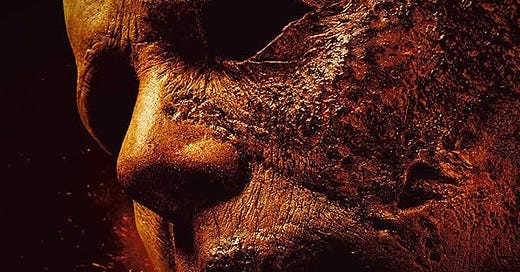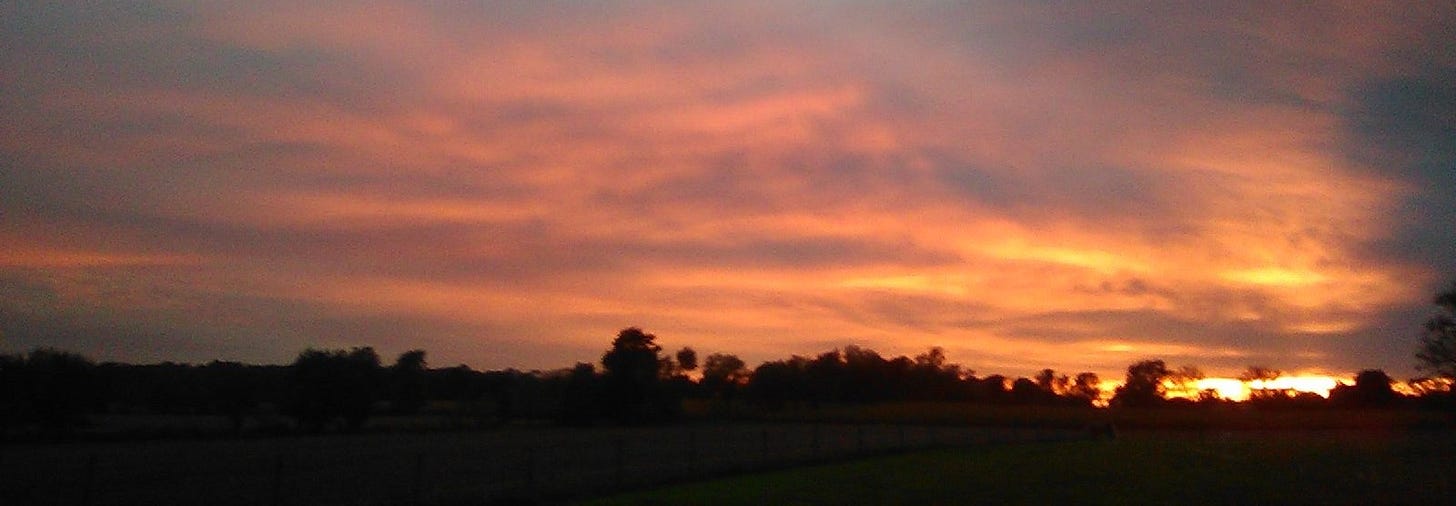Halloween Kills: The Official Movie Novelization (2021) by Tim Waggoner
"She didn’t look back to see if Michael followed. She didn’t have to. Michael always followed."
Readers unfamiliar with Halloween Kills: The Official Movie Novelization may prefer to read these notes only after reading the novel
https://music.youtube.com/watch?v=1UpzjsmBPGc&si=2UnzHgNOy8li4ZkK
Am I really giving three Goodreads stars to a paperback tie-in?
Yep. And last fall I gave 5 stars to the novelization by Curtis Richards of the 1978 "Halloween" film.
* * *
Halloween Kills: The Official Movie Novelization (2021) by Tim Waggoner is filled with tragic--and sometimes comic--incidents evolving over a hellish 31 October night in Haddonfield, IL. Waggoner does an assured and humane job winning readers to the plights of Haddonfield's non-starring population. These passing characters are not treated as canon fodder: we feel their love, their terror, and their animal pain.
The first victims to pluck the reader's heartstrings are an older couple, Phil and Sondra Dickerson. We meet them as they get ready for bed, but are distracted by smoke from the Strode compound’s inferno.
“My goddamn sleep apnea mask smells like Lucky Strikes from when your mother borrowed it.”
She kept her eyes on the drone as she answered. “I smell it too. That stink ain’t cigarettes. It’s Laurie Strode’s house on fire!”
On the TV, a presumably exciting car chase was happening, but Sondra didn’t give a shit. Who watched action movies on Halloween? You were supposed to watch spooky movies then. But Phil didn’t like horror movies, said they were too unrealistic for him. The forty-two-inch flatscreen TV was mounted on a brick wall opposite a sinfully comfortable leather sofa with built-in recliners that featured power recline and power headrest. The sofa was positioned to afford an excellent view of a bank of windows that looked out onto their front yard. Sondra loved to sit on the couch in the morning, gaze out at the trees, and watch the birds and squirrels cavort as she had her first coffee of the day. Before Phil retired, he was a supervisor at the water plant, and Sondra still worked as a cemetery caretaker. They weren’t rich, but they’d splurged on this couch, which, as far as she was concerned, was the best damn purchase they’d ever made as a couple….
The Dickersons charm the viewer and the reader. When Michael Myers killed them, my immediate response was fuming outrage. Which I guess is the normal human reaction that will eventually coalesce the vigilante mob of Haddonfield residents a few chapters later. Watching the film on streaming a few years ago, I turned off the TV when the Dickersons died. I did not return to the film for about six months. (Similar to my response to 1995’s “Seven.”)
The Dickersons appear in Chapter 8. In Chapter 9 we meet another fully realized couple, real estate agents Big John and Little John, the gay couple who have gentrified and now live in the old Myers house. They, like the Dickersons, are an older, comfortable couple, not wrong-time, wrong-place “horny teens.”
“Big John!”
Still nothing.
Now he was getting irritated. He liked music as much as anybody, but he preferred it to be played at a decent volume so you didn’t have to shout at the top of your lungs to get someone’s attention. He started up the staircase, the music becoming increasingly louder as he went. When he reached the second floor, he walked to the study and opened the door. The room contained built-in bookshelves, a burnished walnut secretary desk, and an all-in one turntable system. Big John—legal name John Soto—sat on the leather loveseat in the middle of the room, garbed in pumpkin-pattern pajamas, smoking a joint, and grooving to the music.
Little John watched his husband for a moment, smiling and shaking his head. He then tiptoed forward, slowly, stretched out his hand, and tapped Big John on the shoulder. Big John yelped and nearly dropped the joint. He turned and shot Little John an accusing look.
“Jesus, Little John! You scared me.”
Big John was five years younger than Little John, slightly shorter, and stocky—hence the Big. He was bald and sported a salt-and-pepper goatee, although there was a good deal more salt than pepper in it these days. They’d been together twelve years, married for seven, and business partners for most of that time. When they’d first started dating, their friends had given them their nicknames because they’d gotten tired of trying to figure out which John they were referring to at any given moment. Little John was thin, Big John wasn’t, and thus their new names were born. Although whenever someone asked Big John how he’d gotten his nickname, he claimed it was due to the extraordinary size of a certain portion of his anatomy.
“Would you turn the music down?” Little John asked. “I thought we were gonna watch a movie.”
“Fuck that. It’s Halloween. I got all these spooky records.” He gestured to a stack of vinyl albums resting on the loveseat next to him then grinned at his husband. “Let’s get high and dance.”
“Tempting,” Little John said.
Big John held out the joint, but before Little John could take it, the doorbell rang.
Big John frowned. “Isn’t it a little late?” He picked up the sound-system remote and lowered the volume.
Like the Dickerson scene, the killings of Big John and Little John leave an aftertaste. Readers and viewers raised in the U.S. pseudo-giallo era were taught that maniacs exacted a deflected societal revenge against youth misbehavior. Today we are far beyond the Moral Majority era. The Dickersons and Big John and Little John are my age. They are leading constructive lives; killing them makes me see spots and grind my teeth.
* * *
The vigilante panic that blossoms at Haddonfield Memorial Hospital only reads as arbitrary and offkey if we set aside these preceding deaths.
Drawing an equal sign between a mob of all-but-torch-wielding villagers and Michael Myers tells readers and viewers it is time to have their collective cake and eat it, too.
This occurs when Laurie's daughter Karen steps aside and makes room for Tommy Doyke and retired Sheriff Brackett to convince the mob that they have Michael cornered in the hospital.
In fact the only person they are chasing turns out to be another passenger bus from the Smith’s Grove bus: Anthony Tivoli.
Throughout the novel, deft use of parallel action shows us Anthony's toing and froing around Haddonfield, desperate as his meds wear-off, yet too terrified to ask for help. Anthony's last moments may be the most useful in his life: as a sin-eater expiating the Haddonfield mob’s actions with his own death.
* * *
Halloween Kills ends with the insight that Michael stared out his sister's bedroom window not because he was looking at the world. He was, instead, looking at his own reflection.
Boogeyman as Narcissus…
What else could account for an invincible, decades’ long killing spree except self regard? It's the most useful insight we've had this far into the psyche of Michael Myers.
Jay
7 October 2024






